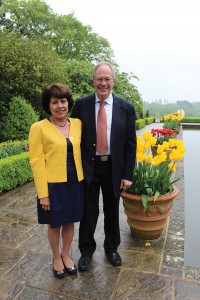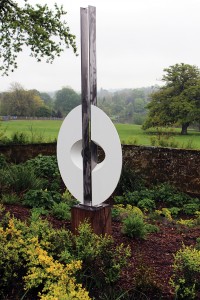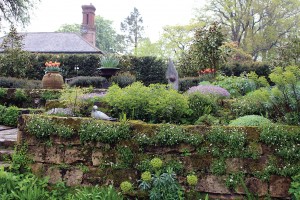


The gardens at Borde Hill reflect the passions of Colonel Stephenson R. Clarke who set about creating them having purchased the house and land in 1893. Between 1893 and 1937 he sponsored many of the Great Plant Collectors’ expeditions. They returned with rare specimens brought back from their travels in the Himalayas, China, Burma, Tasmania and the Andes. Many of these plant species are still at the heart of the collection which make up the seventeen acres of formal gardens we enjoy today.
The custodianship of this remarkable house and garden is now in the hands of Colonel Stephenson R. Clarke’s great grandson Andrewjohn and his wife Eleni. Like their forebears they are passionate about Borde Hill and its gardens. Eleni, a geologist and trained horticulturalist, admits that it is the gardens which inspire her. She explains “Over recent years we have embarked on a program of intensive new planting regenerating existing beds with perennials, grasses and lots of new trees.” She and her team of dedicated gardeners have worked hard to add even more colour and interest to both the gardens and parklands throughout the season. Eleni enthuses “Colour, texture, smell and light are so important. The gardens must be alive to delight the senses of the visitor.” As you walk around the garden your senses are arrested and delighted. The gardens were first opened to the public by Andrewjohn’s father, Sir Ralph Clarke, in 1965, a tradition which he is proud to continue. This botanically important Grade II* listed Sussex garden is made up of a series of ‘rooms’ and vistas which still speak loudly of the Victorian plant collector. Each enthrals the visitor in turn.
The gardens are complemented by forty exciting sculptures from fourteen artists represented in the 2014 Contemporary Sculpture Exhibition. The work is for sale. Amongst my favourites is the abstract sculpture shown here. Titled ‘Henosis’, it is the work of Thomas Joynes. In classical Greek the word for oneness and unity is henosis. In Platonism the goal of henosis is union with what is fundamental in reality. The artist’s attention to materials, texture, light and form frame the Italian garden and its vista beautifully. The influence of organic, natural forms is apparent in Joynes’ work and is particularly appropriate in this context, uniting us with this garden and parkland landscape.
Andrewjohn and Eleni Stephenson Clarke are clearly united to the procession of their family’s ambitions, life and history in this place. Their day often starts at six or seven in the morning as there are always things to do. But when you are on the right path in life there can be an ease to hard work. Eleni concludes “We are very aware of the wonderful heritage of this living collection’s past and our responsibility to replace or propagate the rare.” Andrewjohn and Eleni’s stewardship is deserving of our thanks. Their passion and dedication are keeping this remarkable collection alive in every sense as a rich botanical resource for us all.
This Bank Holiday weekend treat yourself to a visit to the remarkable Borde Hill Garden, Borde Hill Lane, Haywards Heath, West Sussex, RH16 1XP. You will take home wonderful memories and who knows maybe even a sculpture! For more information on opening times and forthcoming events go to www.bordehill.co.uk.
By Revd. Rupert Toovey. Originally published on 21st May 2014 in the West Sussex Gazette.